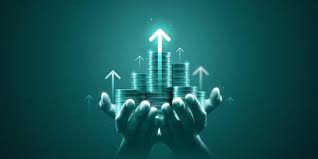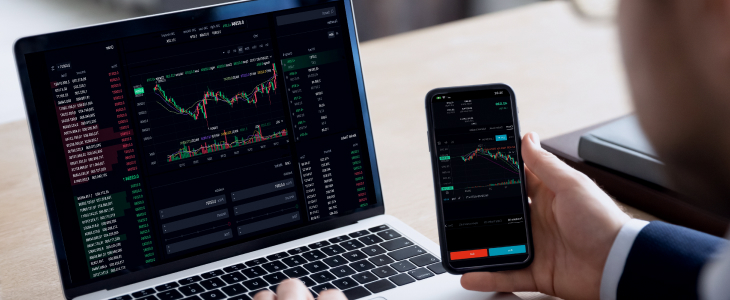
In the fast-paced world of finance, automatic forex trading latam-webtrading.com automatic forex trading has emerged as a revolutionary approach that enables traders to execute orders seamlessly without the need for constant monitoring. The foreign exchange market, or forex, is one of the largest and most liquid financial markets in the world, where currencies are traded 24 hours a day. This article delves into the intricacies of automatic forex trading, exploring its advantages, methods, potential risks, and the tools needed to succeed in this dynamic environment.
The Evolution of Forex Trading
Forex trading has evolved significantly over the years, transitioning from traditional trading floors to computerized systems. The advent of technology has paved the way for automatic trading, allowing traders to leverage algorithms and software to make informed decisions. Automatic forex trading, also known as algorithmic or automated trading, involves the use of computer algorithms to analyze the market, identify trading opportunities, and execute trades on behalf of the trader. This transformation has democratized trading, making it accessible to a wider audience.
What is Automatic Forex Trading?
Automatic forex trading refers to trading strategies that are executed by computer programs based on predefined criteria. These criteria may include technical indicators, price levels, and market conditions. The primary objective of automatic trading is to eliminate human emotions from the trading equation and enable consistent, data-driven decision-making.
Key Components of Automatic Forex Trading
1. Trading Algorithms
At the heart of automatic forex trading are complex algorithms that analyze market data and execute trades. These algorithms can be based on various strategies, such as trend-following, mean reversion, or statistical arbitrage. Traders can either develop their own algorithms or use pre-built ones available through trading platforms.
2. Trading Platforms
A trading platform is essential for automatic forex trading. These platforms provide the necessary tools for traders to implement their algorithms, manage risk, and monitor performance. Popular platforms like MetaTrader 4 and 5 allow traders to backtest their strategies using historical data, ensuring that they are optimized before going live.
3. Risk Management Tools
Effective risk management is crucial in forex trading. Automatic trading systems often incorporate risk management tools like stop-loss orders, take-profit levels, and position sizing strategies. These tools help mitigate potential losses and protect the trader’s capital, ensuring sustainability in the long run.
Benefits of Automatic Forex Trading
1. Eliminates Emotional Bias
One of the most significant advantages of automatic trading is the removal of emotional bias. Human emotions, such as fear and greed, can lead to irrational trading decisions. By relying on algorithms, traders can adhere to their strategies without being influenced by market fluctuations or personal feelings.
2. Increased Efficiency
Automatic trading allows for the simultaneous execution of multiple trades across various currency pairs. This efficiency is particularly beneficial for traders who wish to diversify their portfolios and take advantage of different market conditions without manually monitoring every position.

3. Backtesting and Optimization
Traders can backtest their strategies using historical data, enabling them to fine-tune their algorithms for better performance. This process not only increases the probability of success but also provides valuable insights into how a strategy may perform over time.
4. Time Management
Automatic trading frees up time for traders, allowing them to focus on other essential aspects of their lives or business. Traders can set their strategies to run autonomously, thus eliminating the constant need to monitor the market.
Challenges and Risks of Automatic Forex Trading
While automatic forex trading offers numerous benefits, it is not without its challenges and risks. Traders must be aware of potential pitfalls to avoid costly mistakes. Here are some common risks associated with automatic trading:
1. System Failures
Technical issues can arise, such as software malfunctions, internet connectivity problems, or power outages. Traders must have contingency plans in place to address these potential failures and ensure their systems are reliable.
2. Over-Optimization
While backtesting is crucial, over-optimizing a strategy based on historical data can lead to a false sense of security. A strategy that performs well during backtesting may not necessarily yield similar results in live trading situations due to market changes and unforeseen events.
3. Lack of Market Understanding
Automatic trading does not replace the need for market knowledge. Traders should understand the fundamentals of forex trading and be aware of global economic factors that can influence currency movements. Relying solely on automated systems without proper knowledge can result in unfavorable outcomes.
Conclusion
Automatic forex trading has transformed the trading landscape, offering traders an opportunity to execute their strategies efficiently and objectively. However, success in this domain requires a solid understanding of market dynamics, robust algorithms, and sound risk management practices. As technology continues to advance, automatic trading systems are likely to become increasingly sophisticated, offering even greater potential for traders willing to adapt to this new era of financial trading.
In summary, automatic forex trading presents both opportunities and challenges. By leveraging the benefits of automation while remaining vigilant about the associated risks, traders can enhance their trading experience and navigate the forex market with increased confidence and precision.